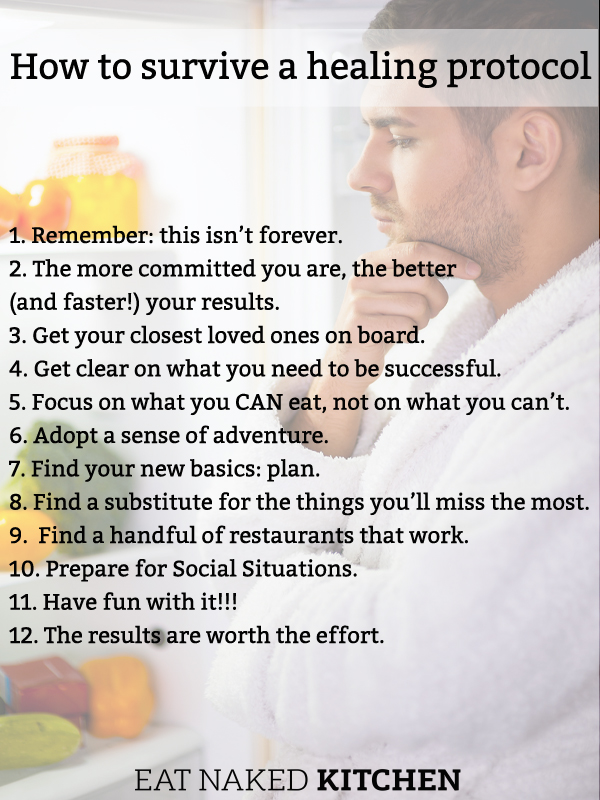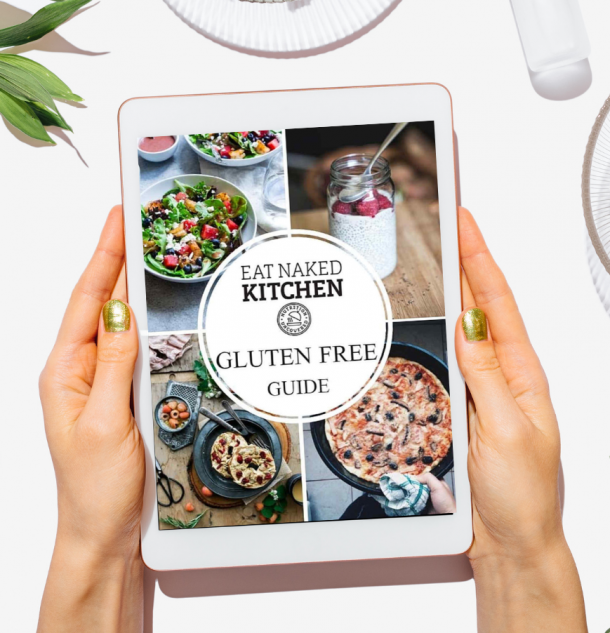I’d just been given what felt like a lifelong sentence to food purgatory.
Going into the appointment with my Naturopath I joked that she’d take away all my favorite foods: cheese, pasta, chocolate, coffee and wine. Coming out, I was grim. If only the list had stopped there! It seemed every single staple in my diet had been taken away. I had no idea what to eat.
This was almost 20 years ago. It was my first introduction to the power of food in healing, and it wasn’t off to a good start.
A friend had recommended I try an alternate approach to the vats of cortisone cream I went through trying to keep my chronic eczema in check. I’d never even heard of a Naturopath before, but I was desperate to try something different. Itchiness will do that to you.
At the end of that first appointment, I wasn’t so sure.
I left her office with my head hanging low, a list pages long of foods I couldn’t eat, and a heavy bag of supplements. Trying to figure out what was left to eat after I took out all the foods she’d put on my “no” list, I literally sat down and cried. Big, ugly, snotty tears.
Now, 20 years later, I’m on the other side of the desk. I’m the one dispensing weird food lists and lengthy supplement protocols, reassuring my clients that they’ve got this. As I walk them through what I’m asking them to do, I know all too well how they feel.
One of the biggest challenges we face as natural health practitioners is that our success depends largely on our clients’ ability to make major life changes. New and often complicated dietary restrictions, lengthy supplement protocols, changing deeply embedded habits… let’s be real: this stuff is HARD. I often wish I could do it for them, but short of moving into their homes for a few months and literally feeding them, this is work they need to do for themselves.
I’m betting that, if you’ve read this far, you, too, are on some sort of strict protocol. Maybe you’ve just eliminated gluten and/or dairy. Maybe you’re on a 21-day detox. Maybe you’re on a multi-month healing journey to get to the root of some chronic issues like I was back in the day.
If so, it’s time for a little good news: It is absolutely possible to rock even the hardest healing protocol. AND: it’s totally worth the effort.
I’ve been on both sides of this story many times, and I have put myself and countless clients through enough intense protocols that I’ve learned a thing or two about how this goes down.
Here are my top 12 strategies for surviving a healing protocol. Whether you’re on a one-day fast or in the middle of a long-term healing process, these ideas will help you get through the days and – dare I say? – even enjoy the experience.
1. Remember: this isn’t forever.
This little detail would have been really helpful back with my Naturopath years ago. Either she forgot to tell me this protocol was temporary or I didn’t hear her amid my rising panic (highly possible), but I was under the impression that this was how I was to eat FOREVER. When I went back to see her a few weeks after I’d started the protocol, she mentioned we’d be reintroducing foods in a couple of months. I cried again; this time, tears of joy.
Yes, it’s true: sometimes parts of a protocol are forever. For example, if you’ve been diagnosed with an Autoimmune disease, it would be in your best interest to say a permanent goodbye to gluten. But the most complex elements of your journey are often in the near-term as you do the deeper work. For some people, this is only a matter of weeks or a handful of months; for others it’s a multi-year process. It depends on how far things have progressed when you start out. But here’s another thing:
2. The more committed you are, the better (and faster!) your results.
Hard protocols are best done full on. Halfway just doesn’t cut it. The clients I’ve had the greatest successes with have been those who’ve really gone for it and dove into the process 150%. Those clients who’ve not been as successful are usually (not always, but usually) the ones who let foods slip in, who are only partially compliant with their supplement protocol, or who pick and choose among my recommendations.
Now I’m not pointing any fingers ‘cause lord knows, I’ve been the less-than-perfectly-compliant client myself. I’ve made excuses as to why certain foods could sneak in even though I knew my body reacted poorly to them; I’ve gotten sick of taking supplements and just dropped them or gotten really lenient and only taken them part of the time. And in those times, the process feels so much harder because I’m not really invested in it. Not to mention I don’t feel as good, so it feels like the whole thing’s not working. As one client used to say, “I’ve got a mean case of the f*ck its.”
What I’ve come to over the years is to go big or go home. If you’re going to the effort of doing healing work, then DO IT and give it your all. Anything less and you won’t see results, the process will drag out, and no one will be happy.
3. Get your closest loved ones on board
This can be a deal-breaker. Is your spouse supportive of what you’re doing, or is he rolling his eyes as you dig through a restaurant menu trying to figure out what you can eat? Never underestimate the power of family pressure – no matter how subtle (or not) it is.
Remember: change is hard and scary, not only for you, but for those around you who love you. Sometimes when you’re getting serious about your health, it throws up a mirror to others and they become hyper aware of what they’re not doing. Even though your health journey has nothing to do with them, it can feel like your new behaviors are a direct attack on their choices.
The best way to handle this? Get it all out in the open. Share with your loved ones what you’re doing and, even more importantly, why you’re doing it. Ask them for their support and explain that your changes don’t mean they have to do anything differently (unless they’re inspired to do so of their own accord).
Some examples:
If you’re fasting for the day, maybe your spouse can take the kids out for dinner rather than have you cook. Or if you’re avoiding a few of your true favorite foods, maybe you agree as a family to keep these foods out of the house for the duration of the protocol (it doesn’t mean the other family members won’t eat them, just not in front of you).
This all closely relates to…
4. Get clear on what you need to be successful.
It will be easier for you and every one around you if you’re clear on what you need to be successful in your efforts.
Sometimes this means strategic reorganizing of your kitchen cupboards so that tempting foods are either gone or out of site. Sometimes this means figuring out a way to organize your supplements so that you always have what you need readily available, whether you’re eating at home or out. (Here’s a picture of my strategy – it started as a travel solution and is now part of my weekly routine.)
The clearer you are on what you need, the more specific you can be when asking for help from others. This will help your loved ones support you even more effectively.
5. Focus on what you CAN eat, not on what you can’t.
Back in the day when I was handed that long list of foods I couldn’t eat, I thought my life was over. I couldn’t fathom that anything was left for me to eat. What I quickly learned is that there were many foods I’d never even tried before! It wasn’t that my list of “no” foods was actually that long; it’s that the list of foods I had been eating was incredibly short.
I see this play out in my practice all the time. Those clients with the most limited diets, eating the same foods day in and day out, often are sensitive to those very foods. (Here’s an explanation of why that is.) Because these foods make up such a significant portion of their diet, removing them feels drastic. But it’s not because there aren’t many other foods to eat.
I’ll be the first to admit there are hard food lists and easier food lists. But generally speaking, even on the hard food lists, there are far more foods you can eat than foods you can’t, so focus on those rather than obsessing about what you can’t have. See point #1 if you’re panicking.
6. Adopt a sense of adventure.
The most challenging thing about trying new foods is that they’re unknown. And when something is unknown, it’s scary.
You have a choice: fear the unknown, fight it, and turn it into the enemy, or embrace it with a sense of adventure. I have done both and let me tell you the latter approach is significantly more enjoyable.
These protocols are actually wonderful new opportunities to expand your palate and your repertoire in the kitchen. Every single time I’ve done an intense healing protocol, I’ve come out with new recipes, new foods, new favorite drinks, new routines. As with anything, attitude is everything. You can make this as delightful or as hellish as you choose. It’s up to you.
7. Find your new basics: plan.
A key tool in exploring new foods is planning. Right now you probably have two to three breakfasts (if that many!) you eat every day. You probably have a small handful of go-to snacks. You probably eat the same five to ten dinners every night. Ditto for lunch.
Where these protocols can be particularly challenging is that your norms – those routine foods you’ve gotten locked down and don’t think about twice – are no longer options for you. And when you’re tired and hungry, the last thing you want to do is spend brain power figuring out what you can eat.
The solution? Planning.
You need to think through and establish your new basics so that you don’t have to stress every time you eat, wondering what on earth you can eat. Here’s the strategy I recommend to my clients:
- Find three to four breakfasts that work within your dietary parameters and rotate them.
- Come up with at least seven, even better 14, and up to a month’s worth of dinners. This gives you at minimum a week of dinners. Here’s my strategy for planning dinners.
- Use your dinners creatively the next day as lunch.
- Develop a new snack list with at least five options of things you can eat between meals.
If all of this feels too hard for you, I highly recommend the meal planning service, Real Plans. They allow you to customize your meals and will give you recipes, grocery lists, and plenty of inspiration of fun things you can eat even with your current dietary restrictions.
8. Find a substitute for the things you’ll miss the most.
We all have our favorites – those things we reach for when we need a little comfort or love. (No judgment there. We all do it, so might as well work with it rather than pretend we don’t.) In these cases, it’s usually about more than just the specific food or dish itself – it’s the ritual, or the mouthfeel, or the associations.
Here’s your task: figure out what it is about your favorites that make them your favorite. For me, my long-time comfort food is macaroni and cheese. I love the stuff. And when I’m craving comfort, that’s what I want. But what about the mac and cheese do I crave? Is it actually macaroni noodles and cheese sauce? Is it the noodles? Or the cheese? Or the creaminess of the sauce? Or the ritual of it?
For me it turns out it’s the creaminess of the sauce, and the vehicle for this creaminess (i.e., the noodles) is less important than the ooey gooey sauce. So if I’m able to eat dairy but not grains, I could have a creamy cheesy sauce on steamed veggies (and I’ve done this plenty of times), or I could make a creamy sauce without cheese, using all manner of substitutes depending on my restrictions in the moment.
What do you miss the most? What about that food or dish do you miss? How can you recreate the missing experience? There’s always a way!
9. Find a handful of restaurants that work.
Eating out is one of the most challenging aspects of a strict dietary protocol. I always recommend to my clients that they find a small number of restaurants that either have dishes they can eat, or ones they can alter slightly to be workable. Knowing in advance that you can eat something when you’re headed out takes a lot of stress off you and allows you to enjoy the experience. There’s nothing worse than getting to a restaurant and realizing there’s not a single thing on the menu you can eat. Do a little advanced investigation to make sure you’ll have good options.
10. Social occasions…
This is a topic big enough for a whole other post, but in a nutshell the key here is to plan ahead, and let your host know your situation. I wrote about this when handling restricted diets for children, and many of the key principles apply to adults.
11. Have fun with it!!!
Attitude is absolutely everything in these things. The more you treat this as an adventure, the more you look forward to trying new things and getting creative in the kitchen, the more you focus on what you can eat rather than what you can’t eat, the more fun and easier this experiment will be.
Best of all, the more fun you have with this, the better your results will be, and isn’t that the whole point?
12. The results are worth the effort
Those many years ago when I was knee deep in my first ever healing protocol, I was sceptical to say the least. I didn’t see what my diet had to do with my insane itchiness. (For those of you lucky enough not to have first-hand experience with eczema, it is a red, inflamed rash that itches like mad. The more you scratch, the worse the rash. But not scratching is an exercise in epic self-control and often near impossible.)
Only weeks into the protocol my eczema started to lessen noticeably, and by the end of the protocol, it had gone completely, never to return again. Every so often I’ll get a teeny patch of it on my hand, but that’s always my indicator that my diet is off and a good reminder to stick with the foods I know work best for my body. I have never since had the massive, body-wide chronic crazy-making eczema that I had in those days, and for the most part, I was able to reintroduce almost every food I had eliminated without issue.
Was that healing worth a few months without my food crutches, wine, coffee and chocolate? You betcha.
What are your strategies for surviving a healing protocol? Please share in the comments below!





Great article- motivational!
LOVE popcorn, but had to remove all corn from my diet. I substitute homemade kale chips when watching movies, to get that salty crunch and still be tasty and satisfying.